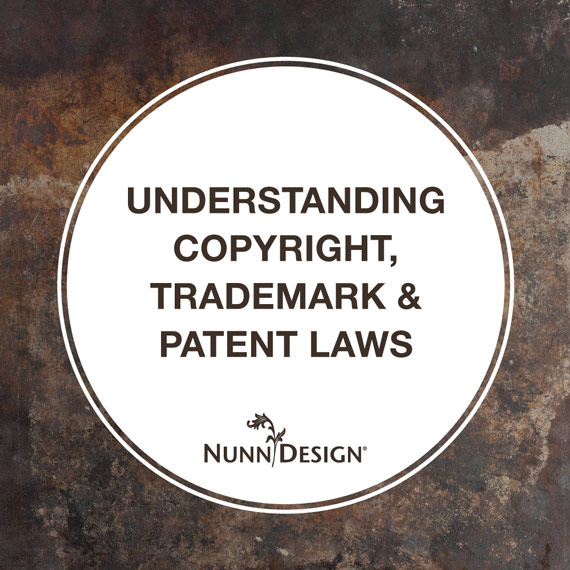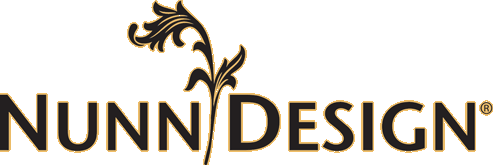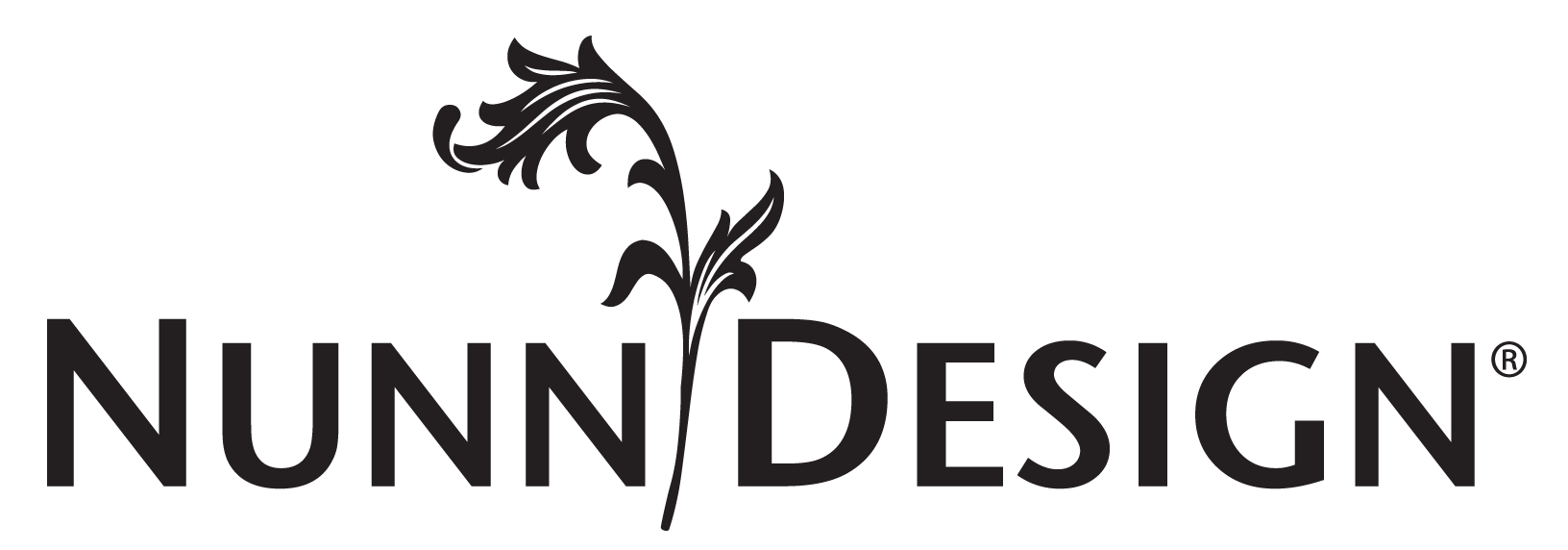Becky's Business Tips
Understanding Copyright, Trademark and Patent Laws

*This post was originally published on September 26 2016 and updated on Dec 27, 2019.*
This is a repost from awhile back, but these issues have been arising in some of my conversations as of late. Please feel free to share this blog post! The more of us artists that know this information, the better for of us all!!

Have you ever pondered any of these questions? How do I legally register my business name and why would I want to? What makes a piece of art an original design? Do I, as an artist, have rights on my original designs? What makes something copyrightable? When I saw that Naomi, the editor of BeadStyle Magazine, was starting to address small business issues, I pitched a legal question and answer article. Below is the full-unedited version of the article written for BeadStyle.
The questions were asked by myself, Becky Nunn, and answered by my attorney, Richard Vershave. Richard is an intellectual property and registered patent attorney for the Seattle based law firm Foster Pepper PLLC. Although Richard’s firm is large, I have appreciated his time and commitment to helping my company grow and his willingness to educate me. Richard can be reached at versr@foster.com if you have any additional questions or if you are looking for a good intellectual property and registered patent attorney.
I know this isn’t light reading, but I really do hope that you take the time to understand the law. Artists have been taken advantage more times than I care to witness. I wish for all of us that we can come together and educate each other, eliminating the heartbreaks that come from just not knowing.
Once I have decided on a name for my business, what do I need to do to make sure that it won’t be in conflict with another company’s name?
Richard: First, do a basic internet search. Second, you should check the Secretary of State records in the state in which you desire to register your business. And lastly, you should have someone knowledgeable in trademark law do at least a basic clearance search to ascertain whether another party is using a similar name for similar goods or services. The last step is the most critical.
Is there an easy way that I can do a basic search?
Richard: Don’t rely solely on the Internet search! To search the Secretary of State records use the following link: http://www.residentagentinfo.com. Most states offer a free search, but some require a nominal search fee. You can also check the United States Patent and Trademark Office website at www.uspto.gov following the prompts to “SEARCH TRADEMARKS.” The trademark clearance search is often a complicated process and to have confidence in the results it should be done by a trademark paralegal or attorney.
What would be the advantages of officially registering my company’s name?
Richard: Registering your name allows you to obtain a competitive advantage while you build your business’ goodwill and reputation. Registration provides a legal deterrent to prevent inappropriate or misuse of your name, especially when a competitor attempts to use your name on an inferior product or service. Only registered trademarks are permitted to use the circle “R” ®. Use of the circle “R” alone often discourages others from using your trademark. In a situation where you feel compelled to enforce your trademark rights, a federal trademark registration provides benefits and damages that are unavailable for unregistered marks. Registration also allows you to prevent others from registering a domain name that infringes your trademark.
The U.S. Patent and Trademark Office identifies the following advantages on their website at http://www.uspto.gov/faq/trademarks.jsp#_Toc275426681:
- Public notice of your claim of ownership of the mark;
- A legal presumption of your ownership of the mark and your exclusive right to use the mark nationwide on or in connection with the goods/services listed in the registration;
- The ability to bring an action concerning the mark in federal court;
- The use of the U.S. registration as a basis to obtain registration in foreign countries;
- The ability to record the U.S. registration with the U.S. Customs and Border Protection (CBP) Service to prevent importation of infringing foreign goods;
- The right to use the federal registration symbol ®; and
- Listing in the United States Patent and Trademark Office’s online databases.
Once I register my company’s name, how do I enforce it?
Richard: Typically, you would notify the alleged infringer to seek a quick resolution. If they are unresponsive or refuse to cooperate then you can send a cease and desist letter. The latter should be reviewed by an attorney before sending because these letters can be problematic to the trademark owner if worded improperly. If all else fails, you can seek judicial action by filing a trademark infringement lawsuit in U.S. federal court.
What is the difference between “TM” and “R”? When do I use one or the other?
Richard: The TM symbol merely provides a public notification to others that you are using or will be using the mark in commerce. The TM may be used by anyone and it does not create any legally enforceable rights. Use of the TM symbol is optional and not required. You may use the TM symbol at any point when you wish to claim trademark rights in a particular mark.
The ® symbol may only be used once you have received a Federal Trademark Registration Certificate from the U.S. Patent and Trademark Office. The ® symbol may only be used on the goods or services specified in your trademark registration. Once registered, you will want to transition from use of the TM symbol to the ® symbol. It is recommended that you seek the advice of an attorney on when and how to use these various symbols.
What if I put a “TM” or a “R” on something that isn’t trademarked or registered.
Richard: Presently, use of the TM symbol is not governed by any local, state or federal laws, but such use should be done only after the clearance search has been completed. Using the ® symbol on trademark that is not subject to a federal registration could have serious consequences including liability for false advertising or difficulty registering the trademark in the future. Again, you may only use the ® symbol after your mark has been federally registered. See http://www.uspto.gov/faq/trademarks.jsp#_Toc275426682.
Often the term “original designs” comes up. What makes something an original design?
Richard: The term “original” in a copyright sense means the design resulted from the creative effort of the designer. The legal threshold for “originality” means that the design cannot be copied in whole or substantially from a design created earlier in time and it must include something “artful” or creative. Courts have often described the “originality” threshold under U.S. copyright law as being “a modicum of creativity.”
Copyrighting is a term thrown around a lot. What makes something copyrightable?
Richard: “Copyright is a form of protection grounded in the U.S. Constitution and granted by law for original works of authorship fixed in a tangible medium of expression. Copyright covers both published and unpublished works.” http://www.copyright.gov/help/faq/faq-general.html. A work of authorship generally includes literary, dramatic, musical, and artistic works, such as poetry, novels, movies, songs, computer software, sculptures, and architecture. Copyright ownership is established upon creation of the work, but cannot be legally enforced unless you register for copyright protection. Many people confuse the term “copyright” with “trademark” or “patent.” Each protects a separate form of intellectual property.
Can you copyright a look? Say I have a necklace in my line that I have created, is it possible to copyright that necklace?
Richard: Yes, assuming the work meets the originality threshold. Your necklace would operate as the tangible medium of expression and it would fall under the category of “artistic work.” We note here that ideas and facts are not copyrightable.
And if I do spend the money to have something copyrighted, how do I enforce it?
Richard: Applying for a copyright registration is relatively inexpensive. See http://www.copyright.gov/docs/fees.html. You may enforce it in Federal court in the manner discussed above relative to enforcing a registered trademark. Further, you may choose to report the infringement to the FBI, the Department of Justice (DOJ), or both. If the alleged infringement is classified as a criminal misdemeanor or felony then the U.S. Government may choose to prosecute and seek criminal sanctions. Sometimes, proof of ownership of a registered copyright is enough to deter others from using your design. One thing to remember is that you should always try to incorporate the circle “C” along with the owners name somewhere on the design or in connection with where the design is sold or shown. You will want to consult an attorney before initiating any type of enforcement action.
What happens if I incorporated a jewelry component from a company that violated a copyright? Am I at risk for selling something that was in violation?
Richard: Yes, the rights holder will have the rights outlined in the previous answer. You could put yourself at risk for civil damages, criminal sanctions, or both if you do not obtain written permission from the copyright owner.
What is product liability?
Richard: Product liability is the area of law that dictates the responsibility of a designer, manufacturer, or seller of goods to adequately warn consumers (e.g., labels, packaging and user manuals) about potential dangers when using a product and to take appropriate design steps to prevent defective product.
Am I at risk for product liability if I use metals or products that aren’t in compliance with US laws and regulations?
Richard: Most likely.
When would I consider a patent?
Richard: Whenever you have an inventive concept that has been developed to the point where you can describe how to make and use the invention to another person that is “skilled” in the art (e.g., another jewelry designer, an engineer, a scientist). Generally, the invention may be a product, a process, or a composition (e.g., chemical or material composition).
What is the process for filing a patent?
Richard: The preparation and filing of a patent application is a complex process that must account for a variety of audiences while meeting all of the stringent rules of the U.S. Patent and Trademark Office. The process typically includes describing your invention in detail and providing that information to a registered Patent Attorney to prepare the patent application. Once prepared, the application will be filed with the U.S. Patent and Trademark Office where it will undergo a scrutinizing, multi-year examination to determine primarily whether the invention is novel and non-obvious. The preparation of a patent application can take anywhere from a few days to a few weeks, if not longer, depending on the complexity of the invention.
Shop Nunn Design Wholesale
Nunn Design has been supplying jewelry artists with findings for over 20 years. Shop wholesale jewelry findings for creative jewelry makers.
Shop Nunn Design!How to Purchase Wholesale?
If you are interested in becoming one of the many designers who trust their jewelry to Nunn Design Findings, please join us by registering to become one of our wholesale customers!
Please visit our Where to Buy Page for a listing of online stores that sell Nunn Design Findings retail.
If you enjoyed reading this post, please subscribe to our blog. Here are 10 Reasons Why to Subscribe and a place to do so!







Thank you!!!!!!!!! This has wonderful information and so well needed!!!!!!!!!